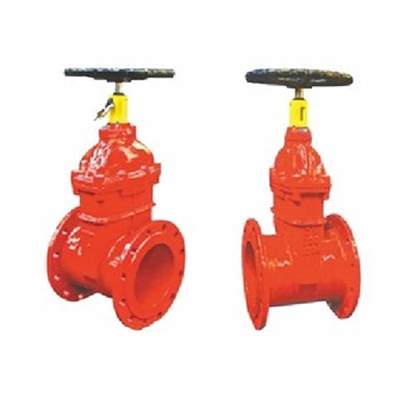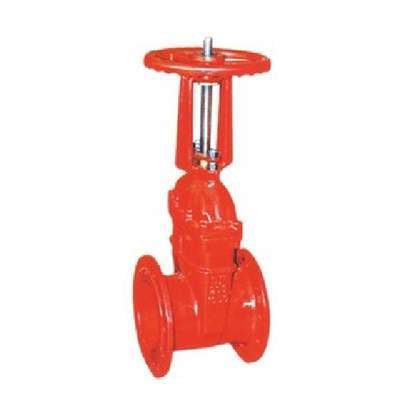Welcome to My Blog!
Before we dive into the content, if you’re interested in our products or have any questions, please feel free to visit our Contact Us page on the website. Our team is ready to assist you with inquiries, orders, or any support you may need.
Now, let’s get started on our journey together. I hope you find the content here insightful, engaging, and valuable.
What is a Fire Valve and Why Is It Important?

A fire valve is a critical component in any fire protection system. Its main function is to control the flow of water in fire sprinkler systems, hydrants, and other fire suppression setups, ensuring quick and effective response during emergencies. Fire valves are designed to prevent backflow, maintain pressure, and provide reliable control of water distribution.
Fire valves are commonly made from durable materials such as stainless steel, cast iron, or brass, chosen for their resistance to corrosion and high temperatures. Their presence is crucial for building safety, as malfunctioning valves can compromise an entire fire suppression system. Understanding the basics of fire valves helps facility managers, engineers, and building owners ensure compliance with safety standards and proper system functionality.
Different Types of Fire Valves
Gate Valves: Features, Advantages, and Applications
Gate valves are widely used in fire protection systems because of their simple design and reliable shutoff capability. They operate by lifting a gate to allow water to flow or lowering it to stop water flow completely. Gate valves are ideal for systems that do not require frequent operation, such as main supply lines for fire hydrants or sprinkler systems.
Advantages of gate valves include:
- Full unobstructed flow when fully open
- Low pressure drop
- Long lifespan if properly maintained
Applications typically include commercial buildings, industrial facilities, and large-scale fire suppression systems.
Butterfly Valves: Features, Advantages, and Applications
Butterfly valves use a rotating disc to regulate water flow, making them more compact and lighter than gate valves. They are often preferred for systems requiring frequent operation or quick shutoff.
Advantages of butterfly valves include:
- Faster operation compared to gate valves
- Smaller installation footprint
- Cost-effective for large-diameter pipelines
Butterfly valves are commonly used in modern sprinkler systems and municipal fire hydrant networks.
Check Valves: Features, Advantages, and Applications
Check valves are designed to allow water to flow in one direction only, preventing backflow that could damage the fire protection system or contaminate the water supply. They are often installed in conjunction with pumps or sprinkler systems to maintain consistent water pressure.
Advantages of check valves include:
- Automatic operation
- Minimal maintenance required
- Protects entire fire suppression system from reverse flow
Check valves are critical for high-rise buildings, industrial sites, and any facility with complex water distribution networks.
Fire Valve Specifications and Standards
Fire valves come in various sizes and pressure ratings, ranging from 2-inch residential models to large 8-inch commercial valves. Choosing the right size ensures proper water flow and system efficiency. Common materials include stainless steel, brass, and cast iron, chosen for durability and corrosion resistance.
Certification standards, such as UL, FM, and CE, ensure that valves meet strict safety and performance requirements. Always check for these certifications before purchasing, especially for commercial or industrial applications.
How Fire Valves Work in a Fire Protection System
Fire valves play a central role in both sprinkler systems and fire hydrant networks. In a sprinkler system, the valve controls the flow of water to different zones, ensuring that water reaches only areas affected by fire. In hydrant systems, fire valves regulate water pressure, enabling firefighters to access adequate water flow during emergencies.
By maintaining consistent water pressure and preventing backflow, fire valves ensure that fire suppression systems function reliably when they are most needed.
How to Choose the Right Fire Valve
Choosing the right fire valve involves comparing gate, butterfly, and check valves based on system requirements, building type, and operational needs. Key factors include:
- Size and pressure rating: Ensures sufficient water flow and pressure.
- Material: Stainless steel or brass for corrosion resistance; cast iron for cost efficiency.
- Application: Gate valves for main lines, butterfly for frequent operation, check valves for backflow prevention.
- Cost and lifespan: Consider initial investment versus long-term maintenance.
Selecting the right valve not only ensures compliance with fire safety standards but also minimizes maintenance costs and improves system reliability.
Fire Valve Installation and Maintenance
Proper installation and maintenance are critical for ensuring long-term performance of fire valves.
Installation Tips
- Install according to manufacturer guidelines and local fire codes.
- Ensure proper alignment and support for pipelines.
- Use compatible fittings to avoid leaks.
Maintenance Checklist
- Inspect valves regularly for leaks, corrosion, or mechanical damage.
- Test operation periodically to ensure smooth opening and closing.
- Replace worn-out gaskets or seals promptly to avoid system failure.
Proper maintenance helps avoid unexpected downtime and ensures compliance with inspection regulations.
Common Problems and How to Prevent Them

Fire valves may encounter issues such as leaks, corrosion, or failure to open/close. Preventive measures include:
- Using corrosion-resistant materials for installation
- Regular inspection and testing
- Prompt repair or replacement of faulty components
By addressing common problems proactively, facility managers can ensure that fire valves perform reliably in emergencies.
Conclusion
Understanding the different types of fire valves—gate, butterfly, and check valves—is essential for any building owner, engineer, or facility manager. Proper selection, installation, and maintenance not only ensure regulatory compliance but also save costs and protect lives.
Always choose valves that are UL, FM, or CE certified, regularly inspect and maintain them, and consult professionals when necessary. By doing so, you can ensure that your fire protection system is reliable, efficient, and ready for emergencies.
FAQ
What is a fire valve?
A fire valve is a device used in fire protection systems to control water flow, prevent backflow, and ensure effective response during a fire emergency.
What are the main types of fire valves?
The main types are gate valves, butterfly valves, and check valves, each designed for different applications in fire sprinkler and hydrant systems.
How often should fire valves be inspected?
Fire valves should be inspected at least once a year to check for leaks, corrosion, and proper operation.
Can I install a fire valve myself?
Professional installation is recommended to ensure compliance with fire codes and proper system performance.
What certifications should a fire valve have?
Look for UL, FM, or CE certifications to ensure the valve meets safety and quality standards for fire protection systems.
Need Assistance Selecting the Perfect Fire Valve?
If you’re uncertain about which fire valve is ideal for your building or fire protection system, our team of experts is ready to guide you. Reach out today for a personalized consultation and make sure your fire safety system is fully compliant and reliable. Don’t risk delays—contact us now to safeguard your property and ensure the safety of everyone inside!
